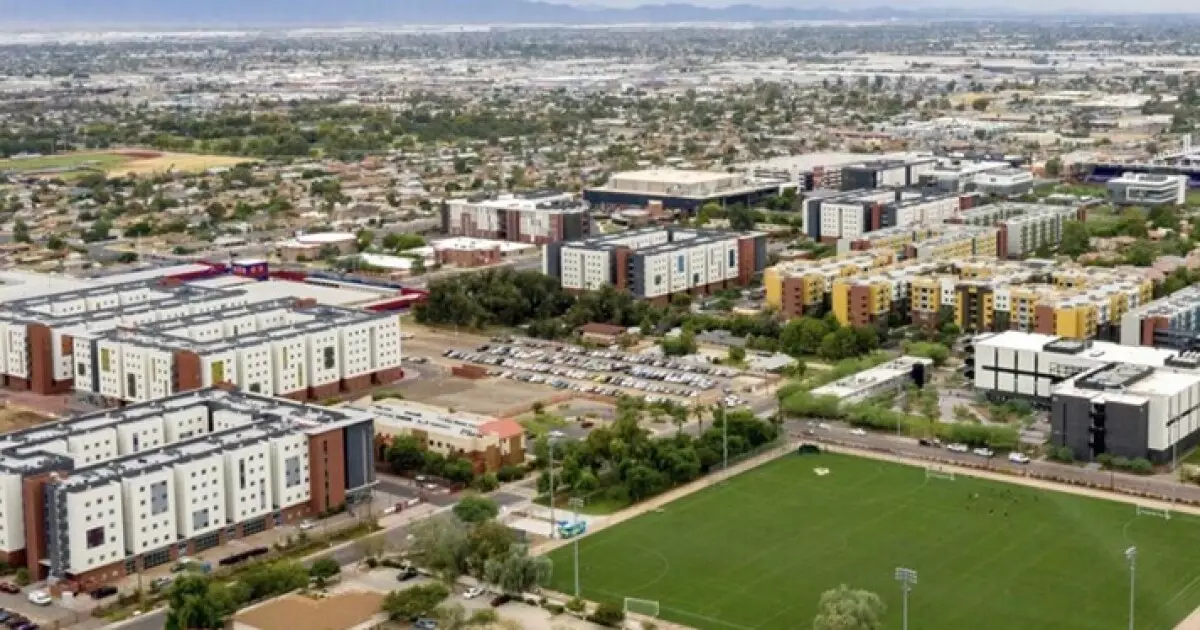In a strategic maneuver aimed at bolstering its financial health, Grand Canyon University (GCU) is preparing to head into the municipal bond market this week. The Phoenix-based institution will attempt to secure $520 million through the issuance of taxable revenue bonds. This decision comes against the backdrop of regulatory challenges and seeks to resolve prior financial obligations linked to maturing bonds that were issued in 2021. Goldman Sachs has been appointed as the sole underwriter for this transaction, which highlights the university’s reliance on leveraging external financial expertise to navigate its fiscal landscape.
The proceeds from this bond issuance will primarily be used to refund two significant cash-collateralized bridge loans. Originally, these loans were sourced to refinance $500 million in Series 2021B bonds, which matured recently on October 1. Additionally, funds will assist in reducing a line of credit utilized for capital improvements, demonstrating GCU’s ongoing commitment to investing in its infrastructure while managing its debt load. This double-layered approach of refinancing existing debts while cutting operational costs is indicative of a robust financial strategy but will require careful oversight to ensure sustainability.
University spokesman Bob Romantic indicated that this public debt sale will cater to qualified institutional investors, reflecting a targeted approach in capital raising. He underscored the ongoing need for refinancing, noting that GCU plans to amortize around $50 million of the outstanding 2021B bonds annually. However, significant refinancing needs are anticipated for larger maturities exceeding $50 million in both 2026 and 2028, suggesting that GCU’s financial obligations will remain a prominent issue in the coming years.
While GCU’s proactive refinancing efforts are commendable, they occur in a climate of skepticism characterized by credit ratings that pose challenges. The bonds have been rated as speculative-grade by Moody’s, specifically Ba1, while Fitch Ratings has assigned them a BBB-minus rating, which stands at the brink of investment-grade status. Moody’s has also altered GCU’s rating outlook to negative from stable, driven largely by regulatory risks that include legal battles with the U.S. Department of Education over tax-exempt status—a critical issue for institutions engaged in providing federal financial aid.
The complexities of GCU’s financial situation are compounded by an ongoing IRS examination and a federal investigation into tuition costs, which resulted in a hefty $37.7 million fine that is currently under appeal. Moreover, the Federal Trade Commission has filed a lawsuit against GCU regarding its marketing and advertising practices. These multifaceted regulatory challenges provide a backdrop of uncertainty that could impact the institution’s future creditworthiness and, consequently, its operational strategy.
Despite the financial and regulatory hurdles, GCU has shown a promising trend in student enrollment—an essential determinant of its revenue generation capabilities. As of September 30, the university reported a total enrollment of 123,002 students, which is an increase from 118,227 in the previous year. The segments of in-person and online students—24,657 and 98,345 respectively—indicate a diversified approach to education delivery that aligns with contemporary demands. Moody’s has mentioned that effective management of enrollment will facilitate GCU’s ability to invest in new programs and enhance facilities, thus fostering a more resilient financial framework.
While Grand Canyon University’s latest $520 million bond issuance reflects a deliberate strategy to manage and restructure its debt obligations effectively, the institution must navigate a myriad of challenges, from regulatory scrutiny to credit rating concerns. Nevertheless, GCU’s growing enrollment figures may provide a beacon of hope, potentially stabilizing its financial standing as it embarks on this ambitious financial endeavor. Future refactoring efforts will be pivotal in ensuring that GCU not only survives but thrives amidst the complexities of higher education financing.

